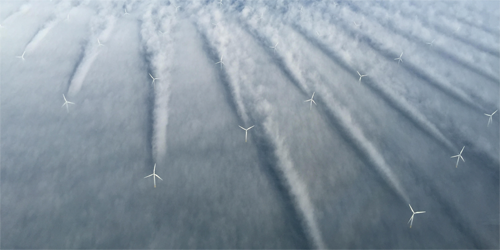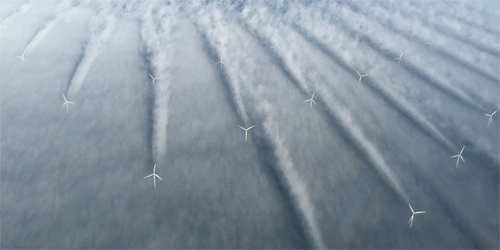Uneven Turbine Placement Improves Wind Farms
A turbine harvesting power from the wind disrupts the flow of air, decreasing its velocity and the amount of energy available to downstream turbines. This wake effect can have a huge impact on the efficiency of wind farms, reducing the average power output per turbine by up to 50%. So scientists are searching for ways to minimize this loss by suitable placement of the turbines with respect to each other. Juliaan Bossuyt and colleagues at the Catholic University of Leuven, Belgium, and Johns Hopkins University, Baltimore, now show that, for large wind farms, uneven spacing of the turbines along the prevailing wind direction optimizes the power output.
For wind farms with several rows of turbines, wake effects can spread to the entire width of the farm. In the past, researchers studied the effect of turbine density on power output using simulations. But studying the effect of the turbines’ spatial arrangement would be computationally too demanding. So, to examine this aspect, the team built a wind farm in their lab. They used 100 miniature turbines made of porous disks, testing over 56 different configurations in a wind tunnel. They found a greater power output with uneven row spacing than with even spacing. In the optimal configuration, the turbines were arranged in pairs of closely spaced and slightly misaligned rows, with larger spacings between each of the pairs. These results emphasize that the optimization of local airflow in wind farms can produce accelerations that are beneficial to the power output.
This research is published in Physical Review Fluids.
–Nicolas Doiron-Leyraud
Nicolas Doiron-Leyraud is a Corresponding Editor for Physics.





